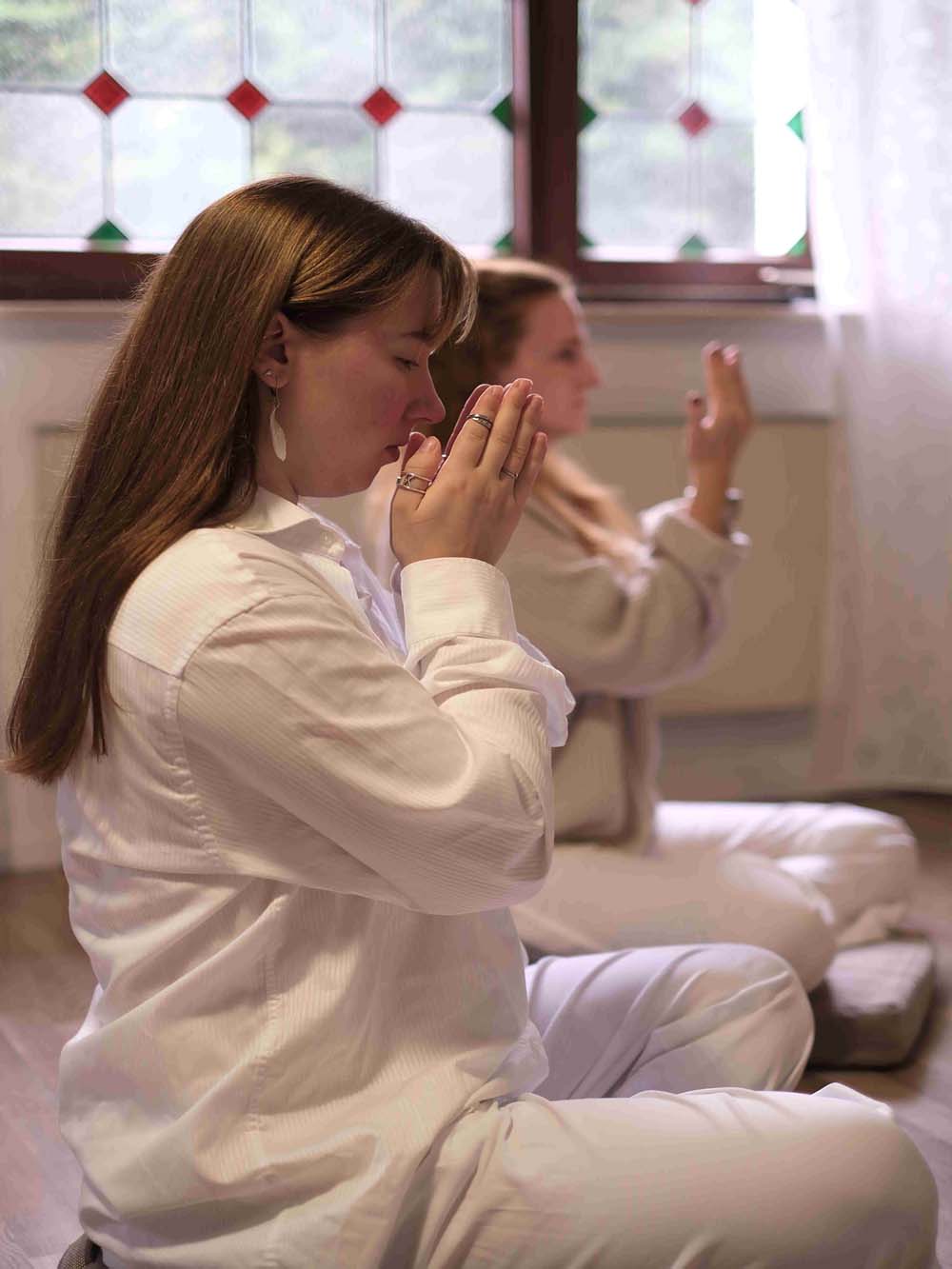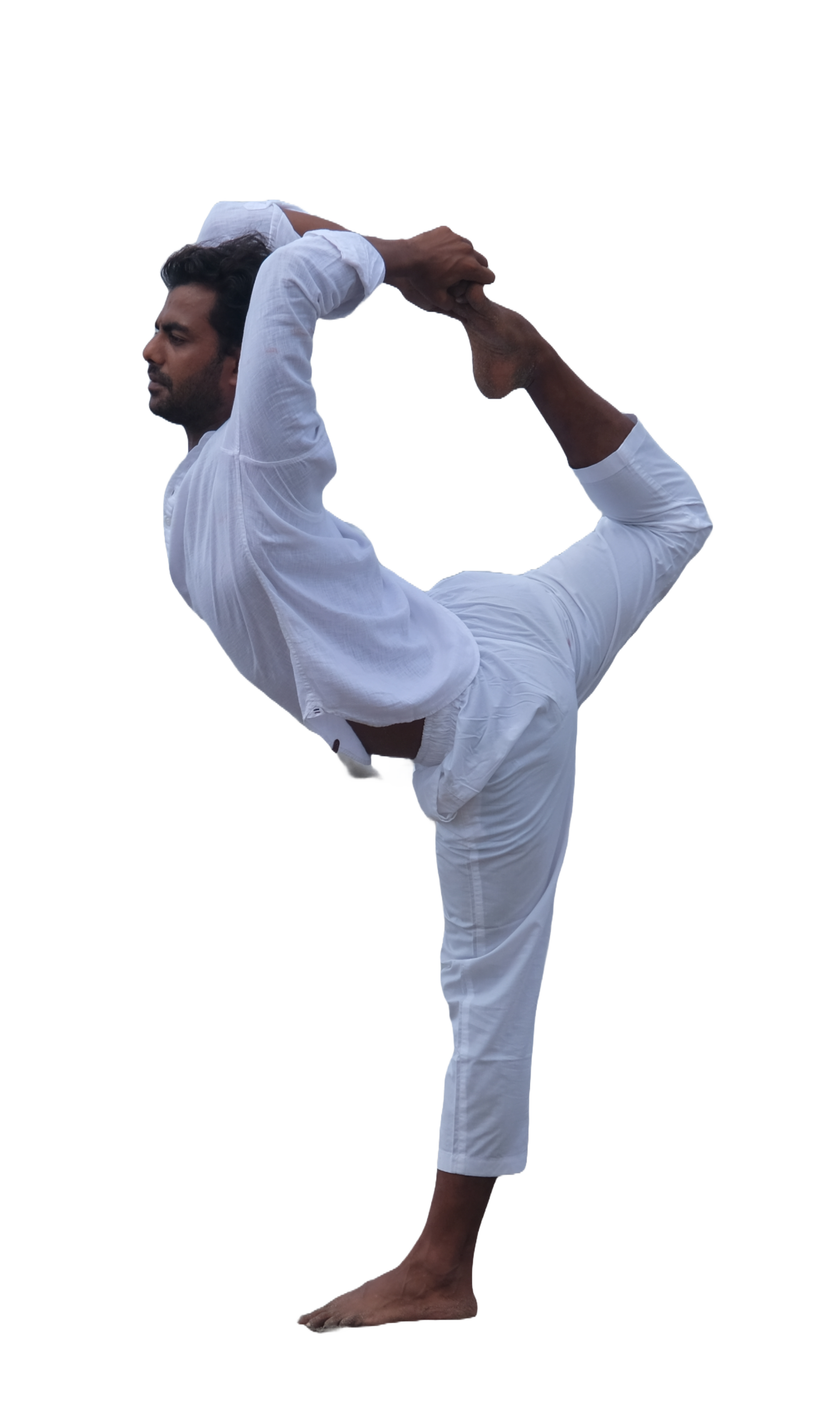-
-
Yoga Courses
Yoga Teacher Training India
Yoga Teacher Training Canada
Yoga Teacher Training Germany
Yoga Teacher Training Greece
Yoga Teacher Training Portugal
-
Yoga Retreats
-
YTTC Guide
by Dr. Katharina Austermann — Anandam Yoga School
We all know the feeling: your breath becomes shallow when you’re stressed or anxious, and effortlessly deep when you feel calm and safe.
This isn’t a coincidence — it’s physiology. Your diaphragm, the primary muscle of breathing, is deeply intertwined with your emotional state. It responds instantly to how you feel, and through the breath, it also influences how you feel.
In this article, we explore the science behind the diaphragm, the nervous system, and how yoga uses this connection to cultivate emotional balance.

The diaphragm is a large, dome-shaped skeletal muscle that contracts downward during inhalation and relaxes upward during exhalation.
While its movement is controlled by the phrenic nerve (C3–C5), diaphragmatic motion strongly influences physiological systems involved in emotional regulation, including:
This means the diaphragm is not controlled by the vagus nerve — but its movement is one of the strongest mechanical ways to activate vagal pathways.
Bordoni & Marelli (2016) describe the diaphragm as part of a “respiratory–emotional system,” noting that changes in stress and affective states influence its tension and movement.
Citation: Bordoni, B., & Marelli, F. (2016). The diaphragm and emotions: embryological, anatomical and physiological review. Frontiers in Medicine, 3(43).
Emotional states produce measurable changes in respiratory pattern:
Rapid, shallow, upper-chest breathing
irregular or sigh-dominant breathing
slow, full diaphragmatic breathing
A study by Boiten (1998) shows that emotions reliably alter breathing patterns, including rate, depth, and posture.
Citation: Boiten, F. A. (1998). The effects of emotional behaviour on components of the respiratory cycle. Biological Psychology, 49(1-2), 29–51.
Although the vagus nerve does not innervate the diaphragm, diaphragmatic breathing strongly activates the sensory nerves of the vagus nerve.
Slow breathing increases vagal tone, which sends “calm signals” to the brain, reducing emotional arousal.

Citations: Brown, R. P., & Gerbarg, P. L. (2005). Sudarshan Kriya yogic breathing in the treatment of stress, anxiety, and depression. Journal of Alternative and Complementary Medicine, 11(4), 189–201.
Porges, S. W. (2011). The Polyvagal Theory: Neurophysiological foundations of emotions, attachment, communication, and self-regulation. Norton.
Additionally, Ma et al. (2017) found that an 8-week diaphragmatic breathing program significantly decreased cortisol and negative mood.
Citation: Ma, X., Yue, Z., Gong, Z., et al. (2017). The effect of diaphragmatic breathing on attention, negative affect and stress in healthy adults. Frontiers in Psychology, 8, 874.
Modern research confirms: Slow diaphragmatic breathing increases vagal tone, reduces cortisol, and improves emotional regulation.
Yoga recognized this thousands of years ago — long before modern neuroscience gave us the language.
Traditional yogic practices — such as Nadi Shodhana, Ujjayi, and slow exhalation breathing —
use diaphragmatic motion to regulate the nervous system.

Jerath et al. (2006) describe slow yogic breathing as a method for increasing parasympathetic activity and reducing emotional reactivity.
Citation: Jerath, R., Edry, J. W., Barnes, V. A., & Jerath, V. (2006). Physiology of long pranayamic breathing: neural respiratory elements may provide a mechanism that explains how slow deep breathing shifts the autonomic nervous system. Medical Hypotheses, 67(3), 566–571.
Your breath is not just a tool — it is a direct line to your emotional brain.
This immediately increases vagal tone and creates emotional regulation.

Your diaphragm gives you real-time feedback about your inner world.
When the breath is shallow, the nervous system is tense.
When the breath is deep and slow, the body returns to balance.
By learning to work with your diaphragm consciously, you’re not just improving your breath — you’re cultivating emotional stability, resilience, and inner peace.
This is where the science of the body and the philosophy of yoga meet.
If you’re curious about the deep connection between anatomy, yoga, and emotional health,
we explore these topics extensively in our Yoga teacher trainings.
We are offering a special price for the first 6 registrations
per month!
